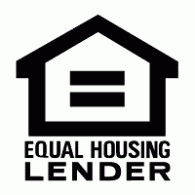- 14362 N. Frank Lloyd Wright Blvd., Suite 2134 Scottsdale, AZ 85260
- Mon - Fri: 8:30am - 6:00pm
Cash-out home loans on primary residence allow borrowers to take out a new mortgage for more than the first one. The difference is sent to the bank and can be used for any purpose. Homeowners can use these funds to pay toward a second home. Investors often use this method to free up capital for additional investments. It’s a great way to scale holdings and increase monthly cash flow.
This method is similar to a home equity line of credit (HELOC) or home equity loan. This guide will go over cash-out refinancing in detail and touch on these other equity-based financing options.
What will be covered includes:
How To Use Cash-Out Refinancing on a Second Home
The point of cash-out refinancing is to unlock capital through equity held in the primary residence. Borrowers must take out more than their current loan to access a portion of their equity.
Here is an example:
What does this mean? Borrowers use cash-out refinancing to pay off the original mortgage. In the meantime, funds are made available to make it easier to invest in a second home. The refinancing will pay for, at least, a down-payment for the second home.
Assuming $100,000 is needed for a down-payment, with $100,000 owing, a Arizona cash-out home loan of at least $200,000 is necessary. The cost of the refinanced amount will vary depending on a few factors, such as interest rates and the borrower’s current credit situation.
Refinancing with a higher interest rate is disadvantageous. This method is only suggested if funds are not obtainable through a less costly source. But, interest rises and falls across the board. If it’s not the best time to refinance, for a better rate, then alternative equity borrowing methods will be just as disadvantageous.
To qualify, the borrower must hold a credit score of at least 620 and have a debt-to-income ratio (DTI) of no more than 50 percent. Their past mortgage payments must be on time with few or no delinquencies. A minimum of 20 percent of total equity must be held in the primary residence.
Further, the income source must be consistent and verifiable. Some other important factors for this process are discussed below.
At times, the biggest benefit is the savings in interest. Many homeowners will go for a five-year, fixed-rate term. When this is up, they will decide whether to refinance the mortgage. In most cases, the savings only occur when interest rates are significantly down.
The best thing to do is track mortgage rate changes. The Federal Reserve Bank of St. Louis has an entire section that monitors the current mortgage rates in the US. Often, cash-out home loans cost less than their alternatives.
This method can reduce the interest cost on a home loan. But, no cash-out refinancing will do better at reducing the cost of the initial mortgage. With this method, the payment period can change to something longer or shorter. For borrowers in a better financial situation now, refinancing can reduce how much interest is paid. A shorter term can drastically lower the interest cost, which is worth it even with a bigger payment.
Regardless, the cost of interest on a cash-out home loan is less than most financing alternatives. Cash-out refinancing is the way to go for those that need help covering the down-payment on their second home.
One other benefit some borrowers face is the ability to avoid the requirement of private mortgage insurance. side from this, homeowners should not forget that refinancing for an investment property or repairs is often tax-deductible. Borrowers should look into the circumstances and find out what tax incentives apply.
Cash-out home loans are only sometimes beneficial when it comes to saving on interest. In reality, this financing method is best used for freeing up capital to invest elsewhere. The equity in the primary residence serves as collateral for the borrower when investing in a second property.
Cash-out refinancing can be used to pay for part or all of a property. The flexibility varies depending on how much equity is held in the primary residence. Some homeowners manage to use these loans to kick-start a new build. Others use it to purchase TLC properties and cover the causes of repairs and upgrades.
This method is also common among homeowners staying in their residence, but looking to convert a portion into a rental property. The high cost of renovations will be coverable and the increase in cash flow can make the borrowing expense worthwhile.
Ultimately, cash-out home loans in Arizona can be more than a convenient way to borrow cash. This method can save money in the short and long term, help investors scale holdings and much more. To get the maximum benefit, borrowers should research and shop rates heavily before seeking a loan.
Warning: The primary residence serves as collateral and can foreclose if the loan defaults.
Home equity lines of credit (HELOC) and home equity loans are the most common alternatives to cash-out refinancing. While a cash-out home loan is a great way to purchase a rental property or retirement home, there are certainly other options.
HELOC helps home buyers come up with the capital to cover the acquisition costs for a second home. The down-payment situation does not change. But, the closing costs are typically higher with a cash-out loan. Borrowers can save on closing when financing through a line of credit instead. In fact, with many lenders, these closing expenses are fully waived after holding the loan for so many years.
The flexibility of the HELOC option is an important factor. Homeowners can borrow from a portion of their equity, and they can borrow again when they need more. Borrowers can access as many withdrawals as required during the drawing period for the credit line. When this period ends, repayment of the principal begins. In the meantime, only the interest needs to be paid on the borrowed amount.
A variable rate is common with this method of financing. In many cases, the interest cost will be lower with the HELOC versus most alternatives. In particular, interest is usually lower with a home equity-based line of credit than with a cash-out home loan or home equity loan.
Unfortunately, when rates are low, they are more likely to go up next, and that means a higher interest cost. Some lenders will offer this line of credit at a fixed rate. While the rate will be higher, it is worthwhile if the borrower expects both: A) to access funds in future years and, B) for interest rates to be much higher by then.
In most cases, a HELOC will have a draw period of up to 10 years and a repayment period of up to 20 years.
Another alternative is the home equity loan. This financing option provides a cash injection for up to 85-percent of the equity in the primary residence. The equity loan method allows homeowners to borrow directly out of the equity they hold in the property. The amount owed will not be repaid through a new loan.
With the home equity loan, borrowers are not refinancing the owed amount. Thus, the interest situation stays the same on the balance of the loan. As interest rates rise in the future, the home equity loan will deserve more consideration.
Another perk with this option is the much lower closing costs. Borrowers only need to pay the costs on the amount of equity borrowed. When refinancing, closing costs also apply to the amount owing on the primary residence.
Personal finance freedom is all about making the right decisions. Personal loans have no place in a credit portfolio when secured assets exist. Take advantage of a cash-out home loan or similar alternative to turn home equity into a source of capital.
With the ball in the homeowner’s court, it’s time to look at real estate financing options in a different light. The methods above touch on what’s possible. But, hold off on any financial decisions before talking with a mortgage expert.
There is a Arizona cash-out home loan primary residence or second home financing solution for any situation. Speak with a mortgage broker and go over your options.
Contact us to learn how to make the most of your home equity!
We’ve been helping customers afford the home of their dreams for many years and we love what we do.
Company NMLS: 150459
www.namb.org


© Copyright 2024 Blake Mortgage. All rights reserved.